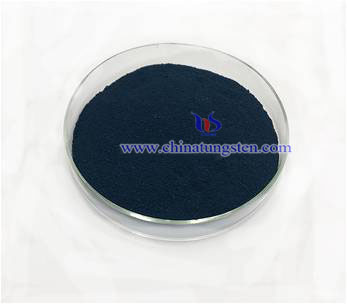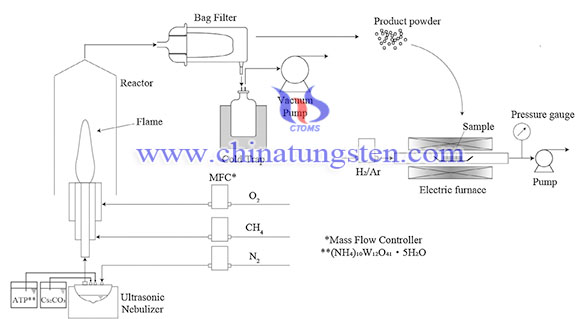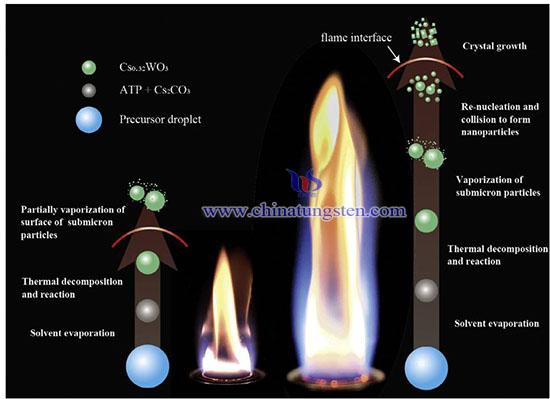Cesium Tungsten Bronze Nanoparticles by Flame-assisted Spray Pyrolysis
- Details
- Category: Tungsten Information
- Published on Thursday, 18 July 2019 18:12
Highly crystalline and hexagonal single-phase cesium tungsten bronze(Cs0.32WO3) nanoparticles can be successfully synthesized by a flame-assisted spray pyrolysis. The proposed process has several advantages, including a short reaction time and the ability to yield products with high purity and good energy efficiency. Furthermore, the Cs0.32WO3 nanoparticles produced in this research showed a remarkable near-infrared shielding ability with a 97.7% cut-off at 1500 nm.

Near-infrared shielding materials have become highly desired for applications in solar control windows for automobiles and buildings to reduce the energy consumption of air conditioning. Noble metal nanoparticles, semiconductor oxides, black compounds, and rare-earth hexaborides show remarkably strong absorption of near-infrared light owing to the effects of localized surface plasmon resonances. Tungsten bronze nanoparticles, such as tungsten trioxide doped with alkali metals, are promising candidates for applications to near-infrared shielding.
Hexagonal cesium tungsten bronze (Cs0.32WO3) nanoparticles are regarded as particularly promising for solar control window applications. Cesium ions have a plasmon resonant frequency that produces strong absorption in the near-infrared region and high transmittance in the visible region with a sharp gradient between the two regions.
Flame-assisted spray synthesis (FASP) shows great promise as a process for continuous production of nanoparticles at a high rate. In the FASP process, the particle size, crystal size, and morphology of nanoparticles can be controlled by adjusting the gas flow rates and precursor concentration. Owing to these advantages, a wide range of materials, from simple oxides to more complex functional materials, can be produced by the FASP method. Here shows the synthesis of Cs0.32WO3 nanoparticles with the use of the FASP.

On the basis of flame temperature measurements, the proposed Cs0.32WO3 particle formation mechanisms are as follows. After the nebulized droplets containing ATP and Cs2CO3 precursors were introduced into the flame zone, solvent evaporation and thermal decomposition occurred instantaneously, and the submicrometer-sized Cs0.32WO3 particles were formed.

- Tungsten Oxide Manufacturer & Supplier, Chinatungsten Online: www.tungsten-oxide.com
- Tungsten News & Prices of China Tungsten Industry Association: www.ctia.com.cn
- Molybdenum News & Price: news.molybdenum.com.cn
- Tel.: 86 592 5129696; Fax: 86 592 5129797; Email: sales@chinatungsten.com



 sales@chinatungsten.com
sales@chinatungsten.com